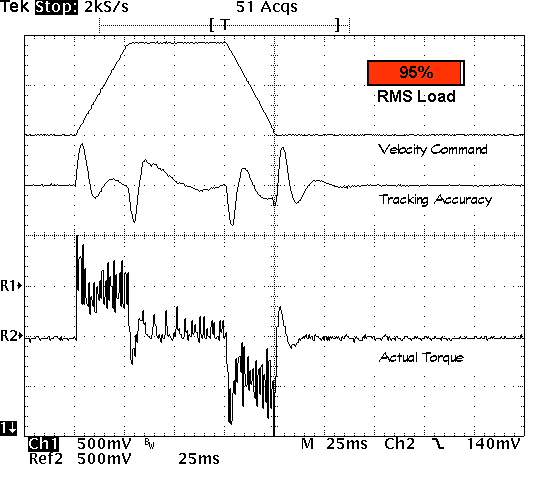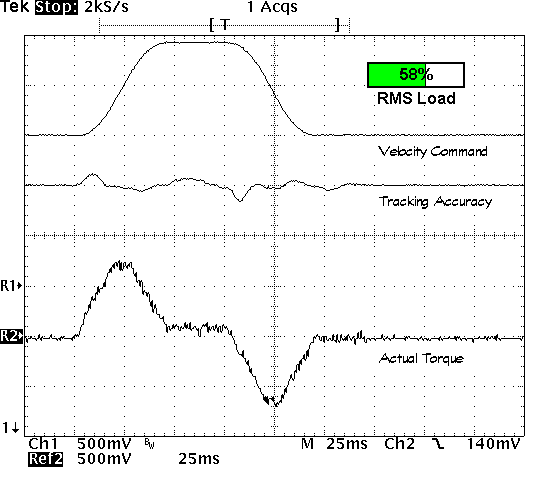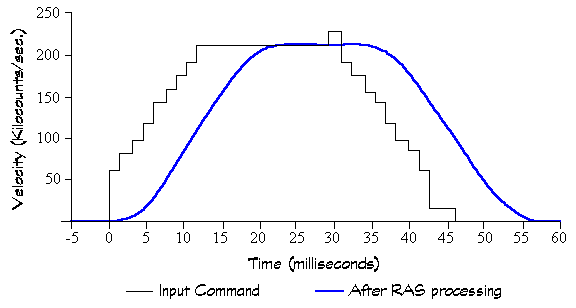 |
This feature
automatically fits a modified, high-order rational spline curve to the
incoming digital command stream, before it is passed to the position/velocity
compensator. The duration of the RAS spline segment on the incoming profile
is configurable using QuickSet™.
This smoothing action has several benefits:
1. The RAS actively morphs the
velocity into a "double" jerk-limited profile (enforcing not only a limit
in the rate of change of acceleration or "jerk," but also in the rate
of change of the jerk). So you can get all the smoothness benefits
of jerk-limited movement—reduced wear on your mechanics, lower acoustical
noise, less jostling of the load, minimized ringing of the mechanism at
the end of moves, etc. using an inexpensive controller (indexer) that
generates only trapezoidal (linear acceleration) type moves.
2. Because the resultant moves
are so smooth, the tracking accuracy is increased which typically results
in reduced settling time as well. The motor will also run cooler (or its
size can be reduced).
3. The RAS function effectively
interpolates the incoming velocity profile and its derivatives
to a high degree of resolution, providing extremely smooth inputs to the
position/velocity compensator for use in acceleration and velocity feed-forward
calculations. This allows the feed-forward gains to be increased to their
optimum level without creating the acoustical noise or torque chatter
problems that other digital positioning servo drives suffer from, and
which limit their use of feed-forward gains to inadequate levels. (See
the following two scope photos).
|



